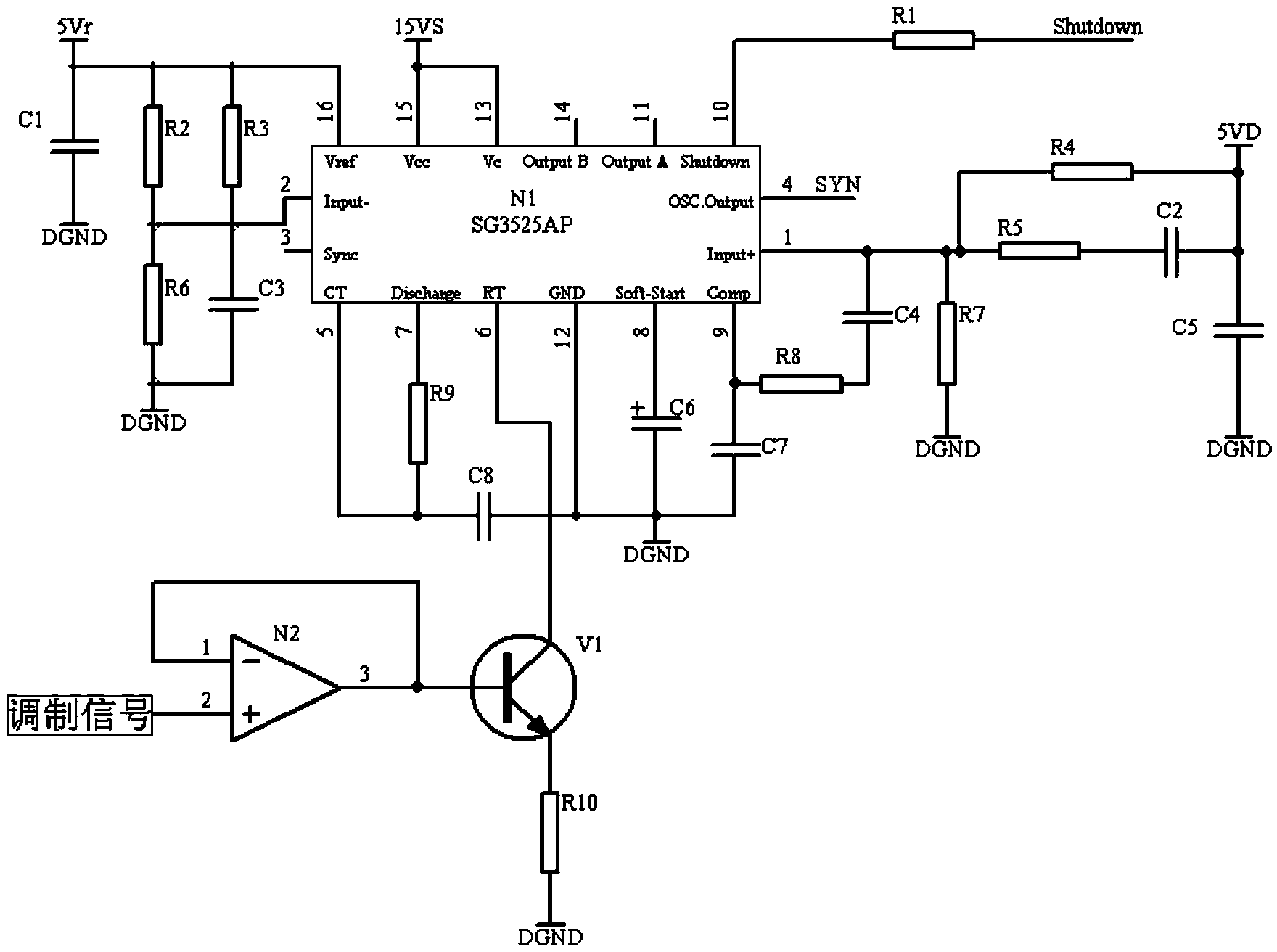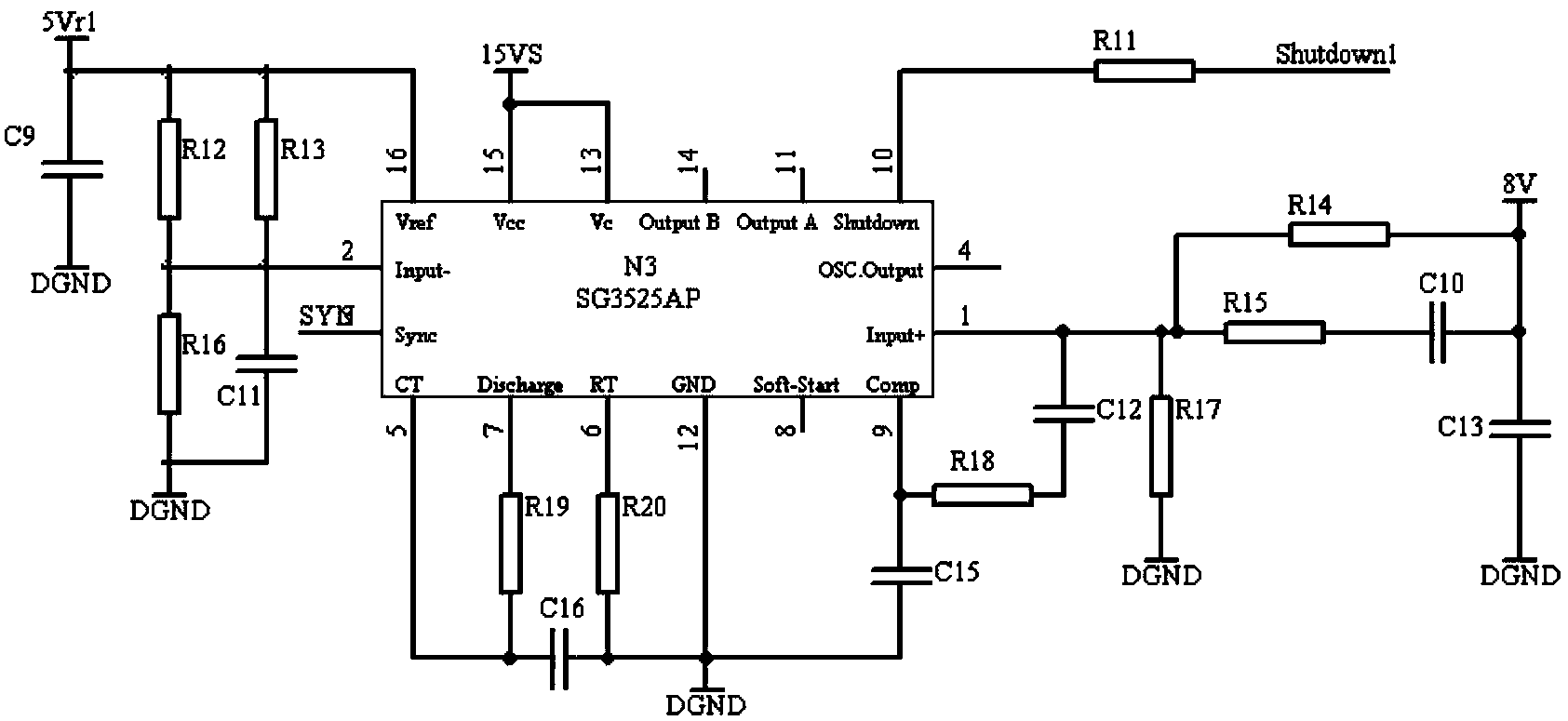Synchronous spread spectrum circuit and method applied to program control direct-current power supply
A DC power supply and program-controlled technology, applied in the direction of electrical components, output power conversion devices, etc., can solve the problems of electromagnetic interference signals of switching power supplies, and achieve the effect of reducing electromagnetic interference
- Summary
- Abstract
- Description
- Claims
- Application Information
AI Technical Summary
Problems solved by technology
Method used
Image
Examples
Embodiment Construction
[0019] The synchronous spread spectrum circuit applied to the program-controlled DC power supply includes three switching power supplies, of which:
[0020] Such as figure 1As shown, the first switching power supply includes an operational amplifier N2, a transistor V1, and a control chip N1 of the model SG3525. The inverting input terminal of the operational amplifier N2 is connected to the output terminal of the operational amplifier N2, and the non-inverting input terminal of the operational amplifier N2 is connected to the adjustment signal , the output terminal of the operational amplifier N2 is connected to the base of the triode V1, the emitter of the triode V1 is grounded through the resistor R10, the collector of the triode V1 is connected to the RT pin of the control chip N1, and the Input- pins of the control chip N1 are connected in parallel The resistance R6 and capacitor C3 of the control chip N1 are connected to the ground, and the input- pin and the Vref pin of...
PUM
 Login to View More
Login to View More Abstract
Description
Claims
Application Information
 Login to View More
Login to View More - R&D
- Intellectual Property
- Life Sciences
- Materials
- Tech Scout
- Unparalleled Data Quality
- Higher Quality Content
- 60% Fewer Hallucinations
Browse by: Latest US Patents, China's latest patents, Technical Efficacy Thesaurus, Application Domain, Technology Topic, Popular Technical Reports.
© 2025 PatSnap. All rights reserved.Legal|Privacy policy|Modern Slavery Act Transparency Statement|Sitemap|About US| Contact US: help@patsnap.com



